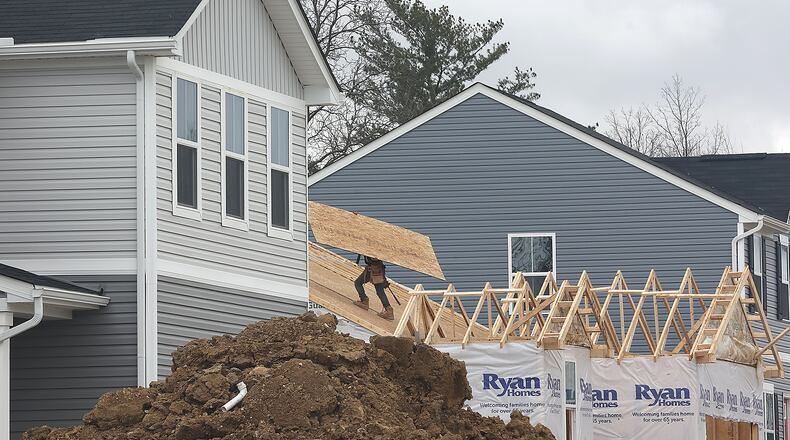Many Springfield Twp. residents became concerned after the Springfield city commissioners last week approved the annexation of nearly 250 acres of a tract of that includes a former drive-in theater from Springfield Twp. for a 1,200 unit housing development, including more than 700 single-family units. The housing project was proposed by Columbus-based Borror property management company, and if rezoning for the project is approved by city commissioners, it would be the largest of its kind in the area in decades.
Two other developments in the area are Bridgewater (226 homes) on Tuttle Road and the proposed Sycamore Ridge development (258 homes) on East Leffel Lane and South Burnett Road. Land from Springfield Twp. was annexed to Springfield for both projects. Bridgewater built its first homes in 2020 and is expected to be completed later this year, according to its developer, DDC management. Sycamore Ridge, also under development by DDC management, is expected to begin its first phase of construction this year.
The Community Economic Development Agreement (CEDA) was put in place in 1999 and expires in 2050 and was signed by township trustees, city commissioners and county commissioners, Foley said.
The economic development agreement put responsibility for road and road right of way maintenance in the hands of township leadership, Foley said, whereas fire, EMS and police services typically are the responsibility of their city.
Foley also discussed tax increment financing (TIF) approved and proposed for the developments.
A TIF has been approved for the Bridgewater development. Roughly 25% of the property tax marked for local schools would go to Clark-Shawnee for up to 10 years, and after that district would receive the full amount of those taxes; whereas, no property tax will go to the township for 30 years. A similar request is pending for the Sycamore Ridge.
No request for a TIF has been approved for the proposed housing development at the former drive-in theater.
“TIF redirects real estate tax dollars away from the township while the township picks up additional road and road right of way responsibility and costs from servicing the additional miles of annexed residential development roads,” Foley said.
Homeowners in the new developments will be residents of both the city of Springfield and Springfield Twp., Foley said, as specified by the CEDA. They will be eligible to vote for city commissioners and township trustees, and certain ballot issues, and they’d also be expected to pay for township fire, EMS and deputy services.
The homes will also not be within the Springfield city school district: potential students would be living in the Clark-Shawnee School District.
If city commissioners approve the TIF agreement for the Sycamore Ridge development, it will create what is known as a New Community Authority, and generate an additional 4 mills of property tax in that development.
That would result in 2 mills going to Clark-Shawnee and the other 2 going to Springfield Twp. during the 10 year period of the TIF agreement. Commissioners are expected to approve the agreement in May.
“NCA partially reimburses the township for the lost property tax revenue during the TIF period,” Foley said.
Clark-Shawnee supt. Brian Kuhn said during Tuesday’s board meeting that the district is planning for the possibility of new students entering into the district, as well as the impact of limited property taxes from the new developments.
Greater Springfield Partnership Vice President of Economic Development Horton Hobbs said during the meeting that not all of the homes in the Melody drive-in development will have “child-bearing” individuals, as the community as proposed will have a mixed style of housing types that cater to multiple age groups.
About the Author

